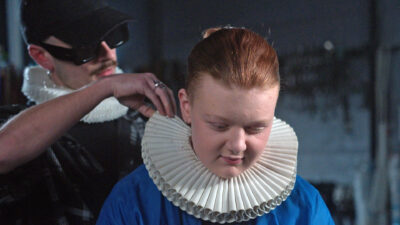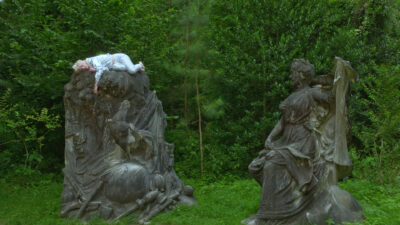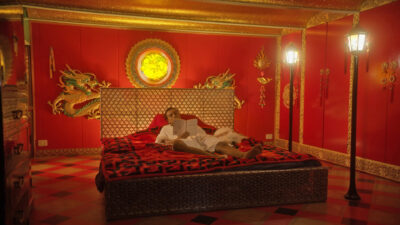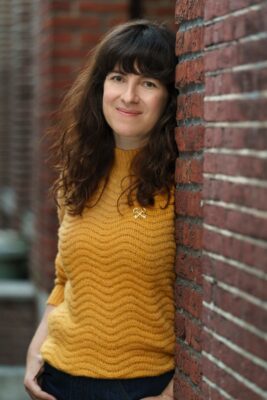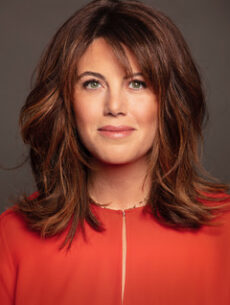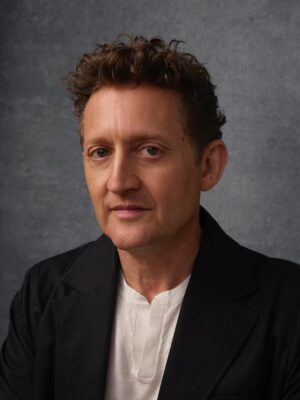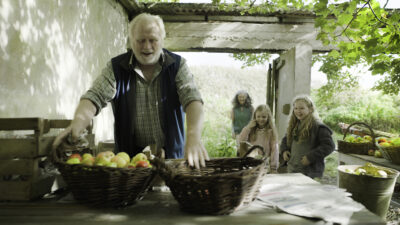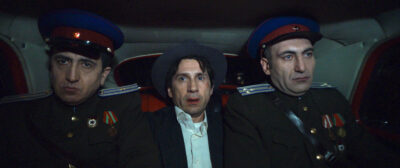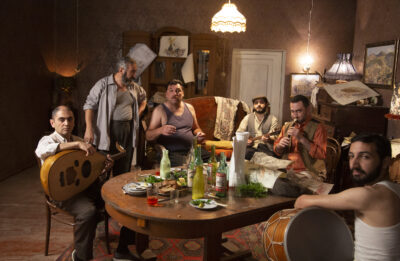Next Wednesday the 6th we’ll be screening Robot Dreams at four of our seven theaters, offering a chance to see this lovely Academy Award-nominated animated feature on a big screen with an audience before the Oscars. The adventures of Dog and Robot in New York City during the 1980s is appropriate for all but the very young.
Director Pablo Berger’s Decalogue:
ROBOT DREAMS is a reflection on friendship.
It’s importance and its fragility. The passing of time, loss but also about overcoming it. Why do we constantly put our relationships in danger?
ROBOT DREAMS is an animated film.
With ROBOT DREAMS I wanted to explore the infinite narrative possibilities of animation. A medium where everything is possible and there are no formal limits.

ROBOT DREAMS is a sensorial journey.
A story written with images, sound and music. A film for daydreaming and accompanying Dog and Robot on their adventures and misadventures. An experience to feel.
ROBOT DREAMS is our interpretation of the graphic world of Sara Varon.
Varon is one of the best known illustrators from the United States. Her anthropomorphic world of animals with human behavior who live in New York is a constant in all her books. Her stories, her recognizable style and her expressive use of color, make her an exceptional graphic artist.

ROBOT DREAMS is a musical.
From the first image to the end, music is present, giving voice to the characters and intensifying their emotions. The soundtrack combines original music by Alfonso de Vilallonga with great musical hits, from the legendary September by Earth, Wind & Fire to the 80s Let’s Go by The Feelies.
ROBOT DREAMS is my “love letter” to New York.
The spectators will travel back in time to the NYC of the 80s. They’ll live in a little apartment in East Village, they’ll take the subway to go to Chinatown, they’ll eat a hotdog from a street vendor on 5th Avenue or go skating in Central Park. ROBOT DREAMS is my particular homage to New York, the city that took me in for a decade and in which I became a filmmaker.

ROBOT DREAMS is for all audiences.
I want to captivate the spectators, the youngest and the oldest, from all around, telling them a story full of fantasy but as real as life itself. A different film for each one.
ROBOT DREAMS is another twist in my filmography.
My aim as a writer-director is always to surprise the audience. I try to make each one of my films a journey to the unknown. Torremolinos 73, Blancanieves and Abracadabra were that. Now it is the turn of ROBOT DREAMS.
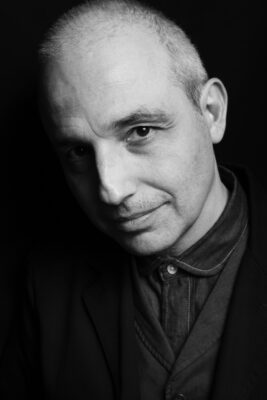
ROBOT DREAMS is a Spanish-French coproduction with an international focus. We merged our artistic and economic resources with France in order to carry out this project. ROBOT DREAMS had its world premiere at the Cannes Film Festival and it then participated in the Annecy Animation Festival. As with my previous films, it will be released worldwide.
ROBOT DREAMS is full of emotions.
A fantastical fable where a glance contains the boldest action. And where emotion comes from the “human” and sincere behavior of our protagonists when faced with adversity.
Director’s Notes
Origin
Over ten years ago, when I was embarked on my chimerical, but finally real, endeavor of making the film Blancanieves, I came across the graphic novel Robot Dreams by Sara Varon. I was gripped from the first pages.
I didn’t read it, I devoured it. Like all good tales, its story took me to an unknown but recognizable place, where I felt at home. I was captivated by its temporal structure, it made me laugh and cry, and most importantly it made me reflect on friendship. While reading it I remembered my great friends, the ones who are still by my side, but above all, those who moved away or whom I lost along the way… I can say that Robot Dreams has reconciled me with my conflicting feelings about the loss of loved ones. Accepting and recovering from loss, undoubtedly, is the intellectual motor and the emotional reason for making the animated version of ROBOT DREAMS.
The World of Sara Varon
Sara Varon, the author of the homonymous graphic novel which inspired ROBOT DREAMS, is an artist with a world of her own. Her stories are fables inhabited by the most diverse animals with human behavior, who coexist in a recognizable, nostalgic New York. The diversity of their fauna reflects perfectly the cocktail of races and ethnicities that live in the Big Apple, giving her stories a greater Universality. Our interpretation of the world of Sara Varon has been from a respectful place, but also from a place of total freedom. Fortunately, from the start, Sara gave us “carte blanche” to create “our” particular ROBOT DREAMS and adapt it to a new medium, film.
The “ligne claire,” A Visual Punch
The graphic style of both the graphic novel and the film ROBOT DREAMS derives from the “Ligne Claire” style, with origins in the French- Belgian school and Hergé, the author of Tintin as its greatest exponent. It is characterized by a narrative way of representing reality using continuous clean lines, flat colors and limited shadows. A visual punch. A way of drawing that made a comeback with great popularity in the
80s with the comics by Serge Clerc, Yves Chaland or Floc’h. In Spain, its ambassador was the publication Cairo and its greatest representative Daniel Torres. A style, the ligne claire, which today is again very present in the comic world thanks to Adrian Tomine or Chris Ware.
A big part of my love for cinema comes from comics.
ROBOT DREAMS, the film, was thought as a comic turned into animated drawings. To achieve this, we have used the characteristics typical of both media and the “Deep Focus” technique, meaning all elements in every shot.
Writing with Images
It has been over a century since the first animation film, Fantamagorie (1908) by Émil Cohl. A short film that retains its magic and its ability to amaze us based only on the power of the line. Of the image. That
is the essence of cinema, writing with images. As a filmmaker it is a challenge and at the same time an enormous pleasure to write stories without using dialog.
After my film Blancanieves, I wanted to go back with ROBOT DREAMS to the essence of pure cinema. But this time from another angle, that of animation. A form of representation and storytelling that has no limits.
The films by Charlie Chaplin, Buster Keaton and Harold Lloyd have been mandatory viewings for the ROBOT DREAMS crew. The wisdom, humanity and humor present in their work have been a great source of inspiration.
The World of Dreams
An essential part of this film are the dreams of our protagonist, Robot. Cinema is daydreaming. Robot’s dreams are a delirious, Freudian, amazing expression of his most intimate desire to meet his friend Dog again. It’s his “return to Ithaca”.
One of my reference comics, and graphic oracles, is Little Nemo in Slumberland (1905). A comic strip where the imagination of its author, Winsor McCay, takes us along with little Nemo on his journey to the “World of Dreams”, Slumberland. A place where everything is possible and in which the unexpected narrative twists follow on endlessly. With ROBOT DREAMS our aim has been the same: to put the spectator on a rollercoaster of continuous surprises.
Art Direction
As a fan of comics and illustration I have been an admirer of the work of José Luis Ágreda for over twenty five years.
He has an impeccable technique and a unique sense of color. His exceptional work in the animation film Buñuel in The Labyrinth of the Turtles (2019) and his experience in the prestigious animation studio Cartoon Saloon, made him my first option as Art Director for ROBOT DREAMS.
A great team of over twenty artists under José Luis’ direction developed concepts, characters, backgrounds, props, color script… the Robot Dreams world. Particular mention for the person in charge of character design, Daniel Fernández Casas. A young designer of enormous talent who has worked on some of the most important films in recent animation such as Klaus or the latest film by Benjamin Renner for the Illumination studio. His first mission on ROBOT DREAMS was to “redraw” our protagonists from the comic to a new medium, cinema. He gave them a fabulous make-over. Then, along with his team, he had to design the most varied jungle of New Yorkers. Hundreds. Sorry, thousands of extras. Be on the lookout.
The Dreamed Film
In preparing all my previous projects, I’ve always made a detailed storyboard of the entire film. For me, the storyboard is the treasure map. “The dreamed and edited film” as Hitchcock said. That is what I felt
my move to animation as something natural. Without being aware of it, my previous work process was perfect for the dynamics of animation.
I used my experience in live action cinema to visualize the story in animated images. A cinematic language where the editing, the composition, the point of view, the visual poetry, the ellipsis and off-screen were essential elements when it came to telling the story of Dog and Robot.
The process of doing the storyboard and the animatics of the film took a full year. We were fortunate in having the storyboard artist Maca Gil, who had just worked on My Father’s Dragon. Maca is a great artist who with two strokes is capable of expressing a range of emotions or representing very complex shots with precision. The team was completed by the editor Fernando Franco and the music editor Yuko Harami.
Fernando and I had worked together on Blancanieves, and our experience had been so incredible that we were looking for an opportunity to repeat it. For a director his editor is like his dance partner, and Fernando and I dance wonderfully together.
Yuko Harami has been the music editor of all my films. There is no making them without her. In ROBOT DREAMS she established the musical concept, looking for and manipulating pre-existing music or “temps” to give emotion and melodic unity to the animatics. Yuko has a unique sensitivity in the selection of this music, which later is of great use for inspiring the composers in their final musical pieces.
Something particular of animation is the Animation storyboard or animatic. The “almost” final edited film. As a writer and director, this is, undoubtedly, the time that the final result is closest to “my dreamed film”.
The Animation
ROBOT DREAMS is a film that looks at the past, at traditional animation, but it is conceived for today’s audience. The film doesn’t exclude any kind of spectator. Classic animation, in two dimensions, drawn frame by frame, has its own 8 expressiveness, humanity and empathy. In ROBOT DREAMS, we have sought a fluidity and a line that reflect the story and its characters with simplicity. And coming from working with actors, I have given maximum importance to the eyes. Our animated characters’ gaze has been the essential element in obtaining performances full of life. In an animation film, in some way, the animators are the actors, they are the ones who give life to each character. Working with them has, definitely, been one of the most gratifying experiences on this long journey.
During the animation stage of the project I relied on the great artist and animation director Benoît Feroumont. When I saw his last short film Le Lion et le Singe I immediately thought that he would be the ideal collaborator for ROBOT DREAMS. Le Lion et le Singe is a wonderful short film full of truth, tenderness and humor. And in addition, also without dialogue. Benoît has great experience as director of animation and has worked on outstanding films such as The Triplets of Belleville by Sylvain Chomet, or
The Book of Kells by Tom Moore. His know-how and sensitivity have been essential to successfully lead a team of over sixty animators.
Music and Sound
Collaborating again with Alfonso de Vilallonga, music composer for my films Blancanieves and Abracadabra, has been, once again, an enormous pleasure. Alfonso is an eclectic, surprising composer, with a prodigious capacity for creating music full of emotion, feelings and rhythm. In ROBOT DREAMS he has done it again thanks to the delicate piano melodies and the cool jazz, a very New York urban sound.
The film’s sound design is a jungle of sound. From domestic environments and noises to the loud, bustling streets of the different neighborhoods in NYC. The sound design for ROBOT DREAMS is the third dimension. Fabiola Ordoyo, with whom I worked on my previous film, Abracadabra, is an alchemist of sound, capable of achieving the perfect color for any atmosphere or sound effect. But unlike in live action film where the base and backbone is the “location sound” recorded on set, in an animation film the designer has to create absolutely all the sounds. A challenge.


